|
Overview
900 Type Diesel Cranking
Motors Bosch Magneto
Project Carbon Pile
Regulator Machined
Aircraft Parts
Non-Ferrous Foundry
Propeller Shifter Switch
Radio Shielding Project
Sperry Servo Units
Supercharging Blowers
World War
Two Product Documents
Supercharging Blowers
This page updated
12-4-2020.
The supercharger blower described in the document below was one of four products that
were supplied to the Detroit Diesel Division of General Motors for use
on its 6-71 six-cylinder 225hp diesel engine. The other three
Delco-Remy products on the 6-71 were the starter, DC generator and
voltage regulator. The 6-71 was the workhorse small diesel engine
of World War Two and was used extensively on armored vehicles and
various landing craft during World War Two. The Delco-Remy super
charging blower was a high precision product that was instrumental
part in keeping American armored vehicles and landing craft
operating at top efficiency.
Plant 7, with the
assistance of the Antioch Foundry in Yellow Springs, OH, were responsible
for the cost effective casting of the two blowers that went into each
supercharger. Interestingly enough, the Muncie Battery Plant was
the point of final assembly of the blowers into the case and end pieces.
As of July 1943, Delco-Remy was delivering 6,500 blowers per month to Detroit
Diesel.
The next two tables show
the variety of armor and landing craft in which the Delco-Remy supercharger
blower was used. These numbers also apply to starters, DC
generators and voltage regulators. From the data below, a minimum
of 95,551 blowers were required for OEM shipments during World War Two.
|
Detroit Diesel
Engine World War Two Tank Applications |
|
Armored Vehicle |
Number
built |
Type
Engine |
Engines per tank |
Total
Engines |
6-71
Engines per tank |
Total
6-71 Engines |
Total Blowers Required |
Comments |
|
British and Canadian Valentine |
3,981 |
6-71
|
1 |
3,981 |
1 |
3,981 |
3,981 |
|
|
British Valentine SP Anti-Tank with 17 pounder main gun |
665 |
6-71 |
1 |
665 |
1 |
665 |
665 |
|
| M3
Grant/Lee |
913 |
6046 |
1 |
913 |
2 |
1,826 |
1,826 |
The
6046 was two 6-71 engine blocks working together as one power
plant. |
| M4A2
Sherman Tank |
10,968 |
6046 |
1 |
10,968 |
2 |
21,936 |
21,936 |
This
was about 20% of the total M4 Sherman production in WWII.
The US Army preferred gasoline powered tanks, since
that was the fuel it normally used in its vehicles. The
Detroit Diesel powered M4A2 Shermans served either with the USMC,
which had access to US Navy diesel fuel, or were sent overseas as
part of Lend Lease. |
| M10
Tank Destroyer |
4,993 |
6046 |
1 |
4,993 |
2 |
9,986 |
9,986 |
The
M10 Tank Destroyer was a US Automobile Industry product being
built by the GM Fisher Body Division at Grand Blanc, MI. |
|
Totals |
21,520 |
|
|
21,520 |
|
38,392 |
38,392 |
This
does not include any spares. |
|
Detroit Diesel
Engine World War Two Landing Craft Applications |
| Type
Landing Craft |
Number
built |
Type
Engine |
Engines per Landing Craft |
Landing Craft using Detroit Diesel Engines for propulsion |
Number
of Detroit Diesel Engines for propulsion |
Number
of 6-71 for ship's power |
6-71
Engines Usage |
Total Blowers Required |
2-71 Engine Usage |
Comments |
| LCP(L) |
2,193 |
Various including
Gray Marine 64HN9/Detroit Diesel 6-71 |
1 |
1,097 |
1,097 |
|
1,097 |
1,097 |
|
Assumes 50% Gray
Marine 64HN9/Detroit Diesel 6-71, as that was the preferred
engine. |
| LCP(R) |
2,572 |
Various including
Gray Marine 64HN9/Detroit Diesel 6-71 |
1 |
1,286 |
1,286 |
|
1,286
|
1,286
|
|
Assumes 50% Gray
Marine 64HN9/Detroit Diesel 6-71, as that was the preferred
engine. |
| LCV |
2,366 |
Various including
Gray Marine 64HN9/Detroit Diesel 6-71 |
1 |
1,183 |
1,183 |
|
1,183
|
1,183
|
|
Assumes 50% Gray
Marine 64HN9/Detroit Diesel 6-71, as that was the preferred
engine. |
| LCVP |
23,353 |
Gray Marine
64HN9/Detroit Diesel 6-71 or Hudson built Hall-Scott 210 hp
gasoline powered Invader |
1 |
19,353 |
19,353 |
|
19,353 |
19,353 |
|
Some LCVPs received the Hudson built-Hall-Scott 210 hp gasoline
powered Invader engines due to the fact Detroit Diesel could not
supply all of the engines the military was requesting.
Hudson built 4,000 of these, so I have used that number to
subtract from 23,353. |
| LCM(3) |
8,631 |
Gray Marine
64HN9/Detroit Diesel 6-71 or
Kermanth 100 hp six cylinder gasoline engines |
2 |
4,223 |
8,446 |
|
8,446 |
8,446 |
|
Assumes 50% Gray
Marine 64HN9/Detroit Diesel 6-71, as that was the preferred
engine. |
| LCM(4) |
2,718 |
Gray Marine
64HN9/Detroit Diesel 6-71 or
Kermanth 100 hp six cylinder gasoline engines |
2 |
2,039 |
4,078 |
|
4,078 |
4,078 |
|
Assumes 75% Gray
Marine 64HN9/Detroit Diesel 6-71, as that was the preferred
engine. |
| LCM(6) |
2513 |
Gray Marine
64HN9/Detroit Diesel 6-71 or
Kermanth 100 hp six cylinder gasoline engines |
2 |
1,885 |
3,770 |
|
3,770 |
3,770 |
|
Assumes 75% Gray
Marine 64HN9/Detroit Diesel 6-71, as that was the preferred
engine. |
| LCT(5) |
470 |
Gray Marine 64HN9/Detroit Diesel 6-71 |
3 |
470 |
1,410 |
|
1,410 |
1,410 |
|
|
| LCT(6)
|
960 |
Gray Marine
64HN9/Detroit Diesel 6-71 |
3 |
960 |
2,880 |
|
2,880 |
2,880 |
|
|
| LCI(L) |
923 |
Detroit Quad
Diesels (6051) |
2 |
923 |
1,846 |
1,846 |
9,230 |
9,230 |
1,846 |
The 6051 was the
designation for four 6-71s tied together. The ship's power
on the LCI was provided by two 2-71 engines driving 20KW
generators. |
| LCS(L) |
130 |
Detroit Quad
Diesels (6051) |
2 |
130 |
260 |
260 |
1,300 |
1,300 |
260 |
The ship's power
on the LCS(L) was provided by two 2-71 engines driving 20KW
generators. There is still one LCS(L) in existence at Mare
Island in San Francisco, CA. See the links page for more
information. |
| LST |
1,052 |
Detroit Diesel
6-71 |
3 |
1,052 |
0 |
3,156 |
3,156 |
3,156 |
|
The ship/s power
on the LST was provided by three 6-71 engines driving 100KW
generators. |
| Totals |
47,881 |
|
|
34,601 |
45,609 |
5,316 |
57,189 |
57,189 |
2,106 |
This
does not include any spares. Also, this is almost a year's
production for Detroit Diesel during the WWII. |
| Type
Landing Craft |
Number
built |
Type
Engine |
Engines per Landing Craft |
Landing Craft using Detroit Diesel Engines |
Number
of Detroit Diesel Engines |
Number
of 6-71 for ship's power |
6-71
Engines Usage |
Total Blowers Required |
2-71
Engines Usage |
Comments |
The engineering report
below reveals that Delco-Remy was not only casting the rotors, but then
assembling them into the final blower unit. The assembly operation
was in the Muncie battery plant and as of July 1943, Delco-Remy was
delivering 6,500 blowers per month to the Detroit Diesel Division of
General Motors. 6,500 units per month may be a misprint as Detroit
Diesel built an estimated 95,000 6-71 engines during World War Two.
This production of 95,000 engines took place from 1941 to 1945. As
popular as the 6-71 was during the war, Detroit Diesel had a difficult
time keeping up with demand. If Delco-Remy was producing 6,500
units a month in July 1943, after a year it would have produced 78,000
blowers. It would be building more blowers than Detroit Diesel
could use. This would have been wasted production capacity for
Delco-Remy. D-R was also strapped to meet production during the war.
All companies were. It could have used the this capacity for other
products needed by the military. 650 units per month would be more
reasonable. Delco-Remy production started in late 1941 or early
1942 on the blowers. Maybe the 6,500 units was total production
over that time period. We will never know. It should be
noted that from the "Supercharging Blowers" engineering report that D-R
was not the only manufacturer of the blower. It was the largest,
but there was other unit being made by other companies to provide
Detroit Diesel with enough blowers to keep production running.
In spite of what the
question on how many were being produced, this was still a significant
product that Delco-Remy made for the winning of World War Two, as there
was a blower on each 6-71 diesel engine it built. These were used
in Sherman tanks, Wolverine tank destroyers and most of the landing
craft during the war. It is hard to understand why there was not
more emphasis on this product in "Our War Job" or the February 5, 1945
issue of the Clan. One reason the final assembly of the blowers is
overlooked is that the final assembly was in Muncie, and the both 'Our
War Job" and the Clan are Anderson centric. There is no mention on
the number of batteries in the Clan that the Muncie battery plant
provided for the war effort.
It is noted in the
document that Delco-Remy was the largest supplier of the supercharging
blowers to Detroit Diesel.
The document in this section is courtesy of the Madison County Historical Society in
Anderson, IN.
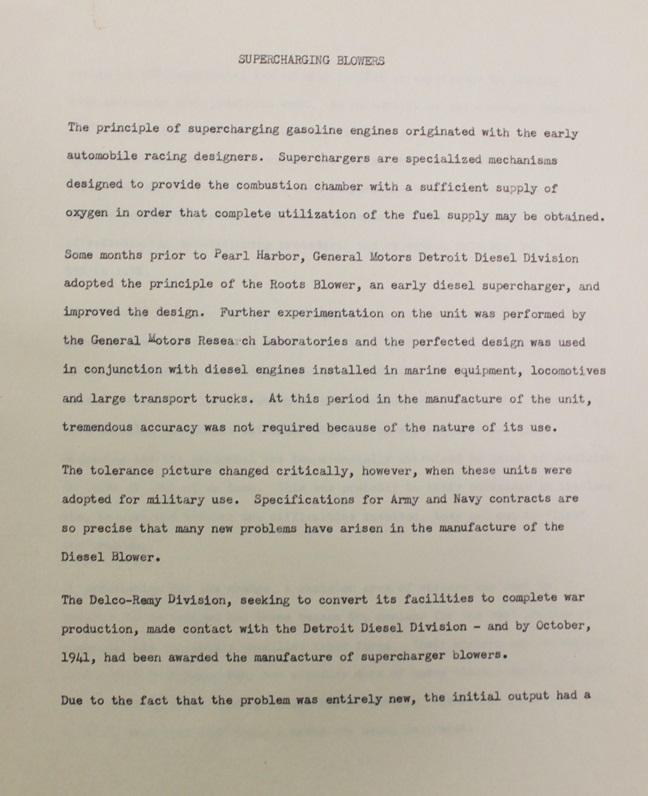
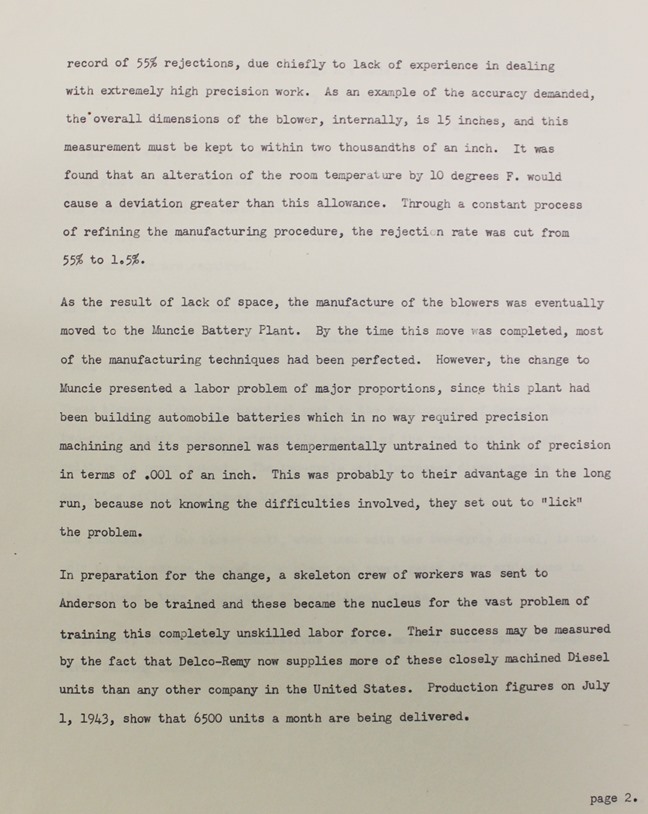
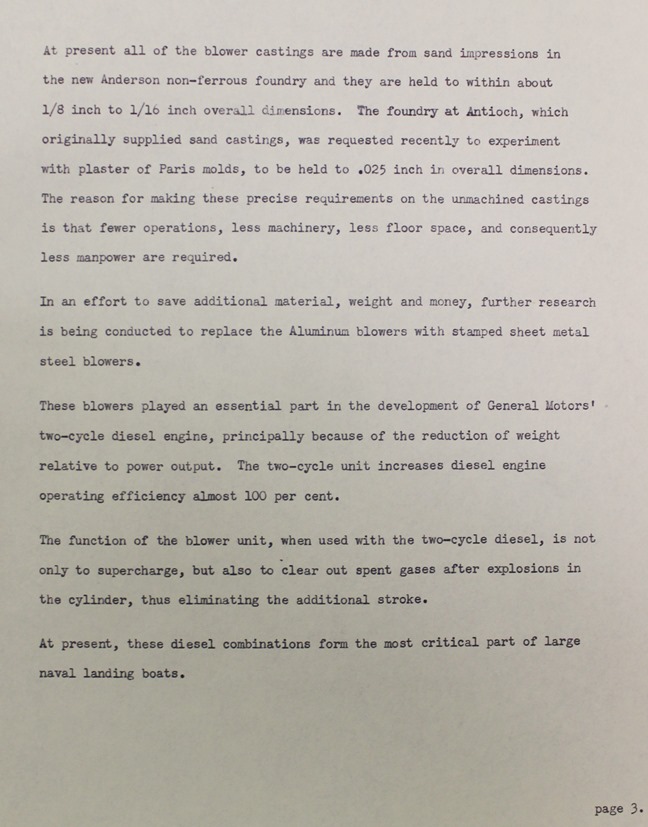
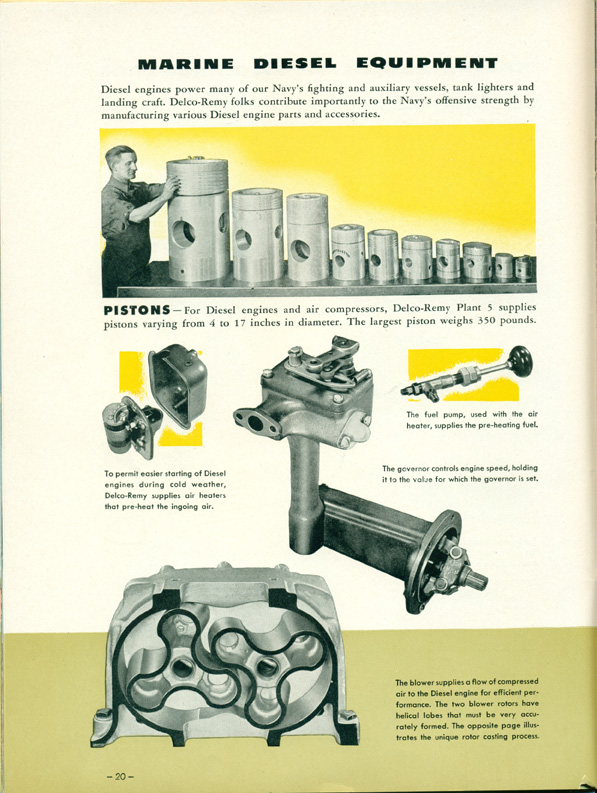
From "Our War Job."
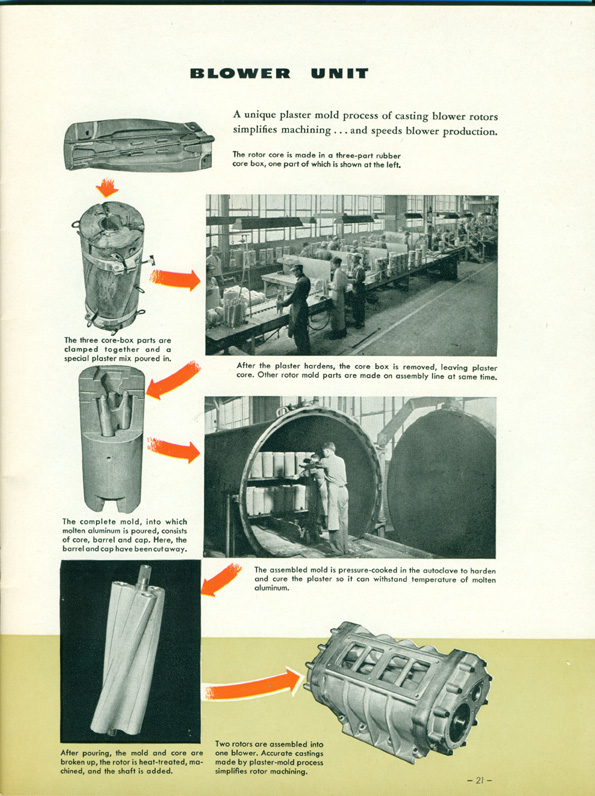
From "Our War Job."
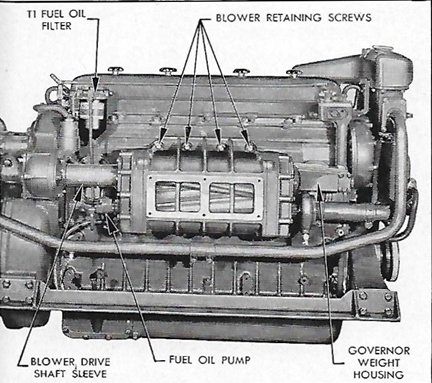
This and the following images are from a
Gray Marine student manual used to train sailors, coastguardsmen and
soldiers on how to maintain a Gray 64HN9 marine engine which was the
main engine used on most of the 34-foot wooden landing craft of World
War Two. It was the main engine used on these landing craft which
included the Higgins boat. The Gray 64HN9 was a Detroit Diesel
6-71 engine that was modified for marine operation. The 64HN9 also
had a Delco-Remy starter, generator and voltage regulator installed on
it.
Yes, soldiers operated
landing craft. The U.S. Army had its own fleet of landing craft
that it operated during World War Two. The U.S. Coastguard
provided most of the crews that manned and operated the U.S. Navy's
small landing craft during World War Two.
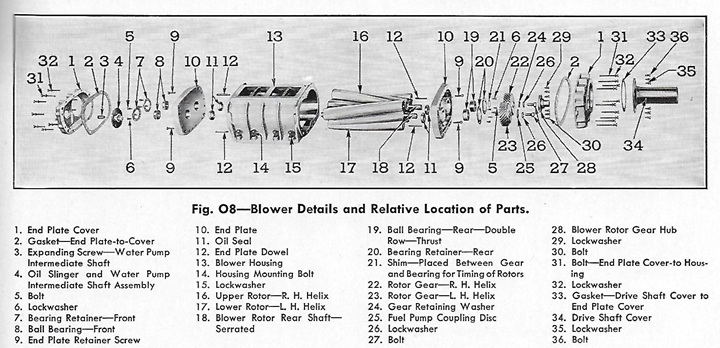
There were 36 different parts that had to be
assembled into the final unit.
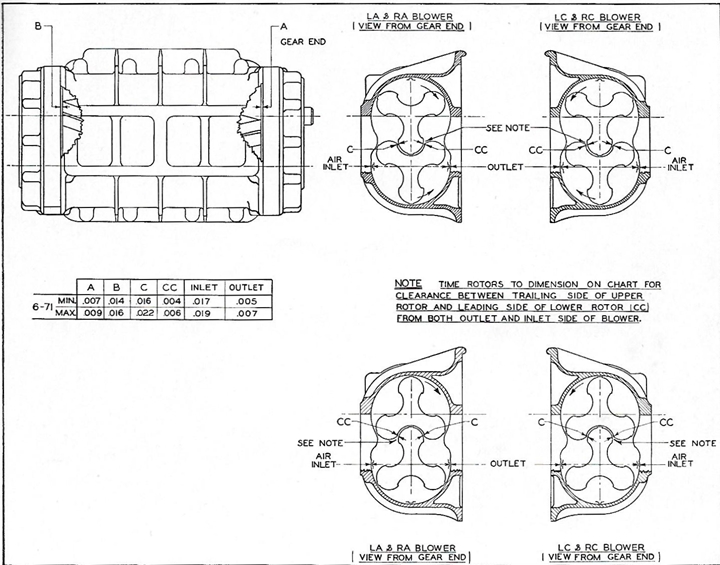
The tolerances of the rotors was critical
for the proper operation of the blower.
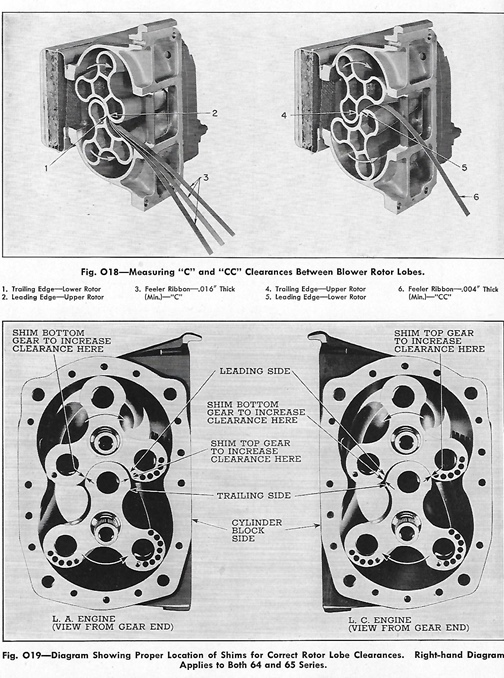
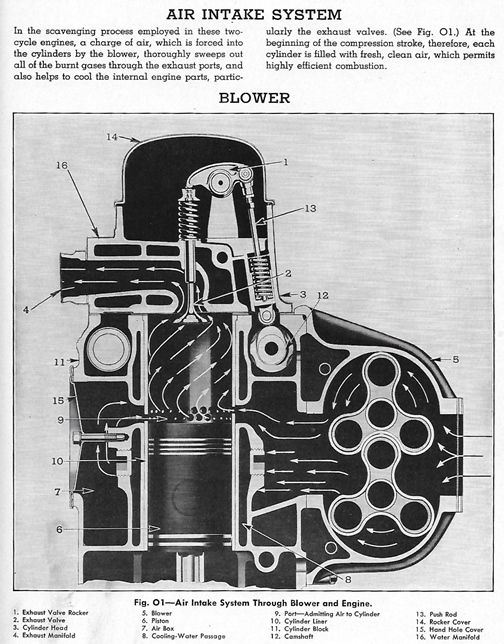
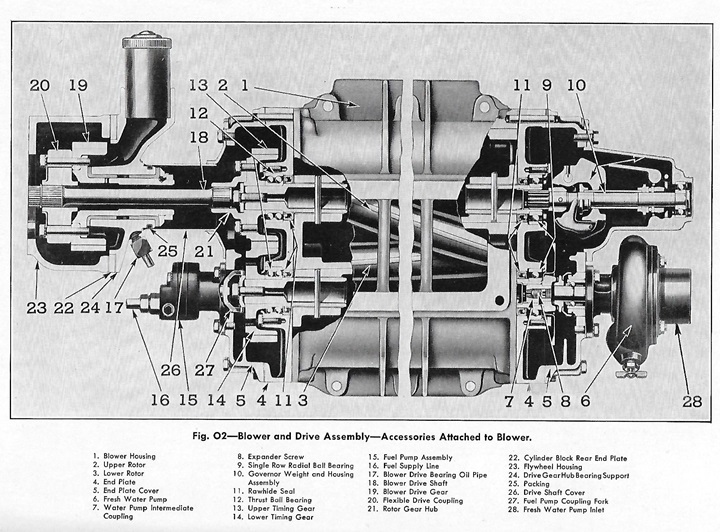
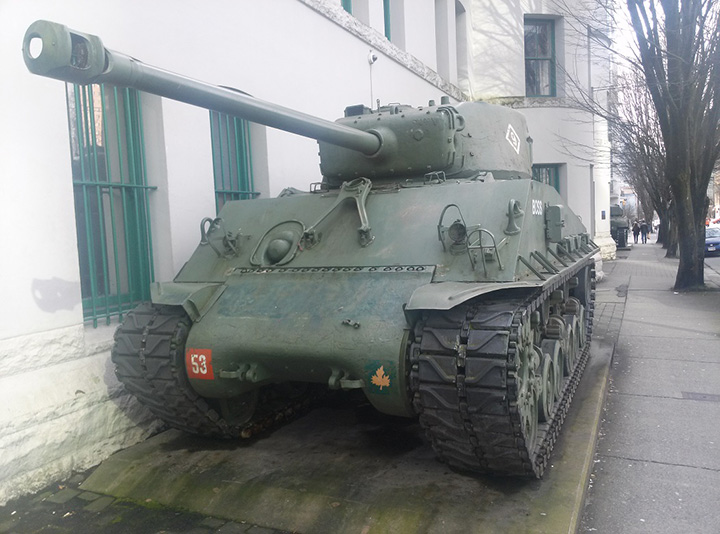
An M4A2 Sherman tank with a Delco-Remy blower on each of the two 6-71
engines in the tank. Photo courtesy of David Jackson, Jr.
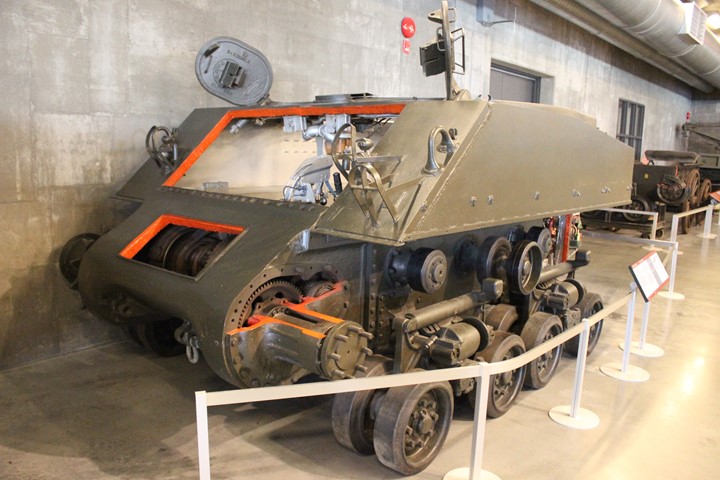
This is a cut-away of an M4A2 Sherman tank on
display at the Canadian War Museum in Ottawa, ONT. Author's photo.
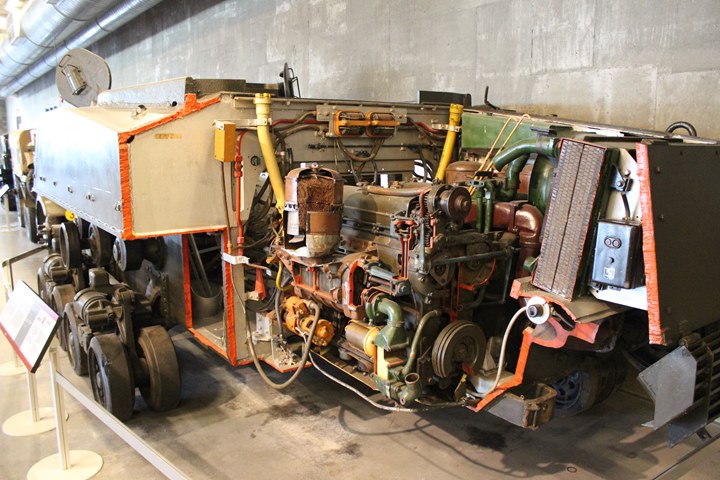
This is a cut-away of the Detroit Diesel
6046 engine which is two 6-71s married together. Author's photo.
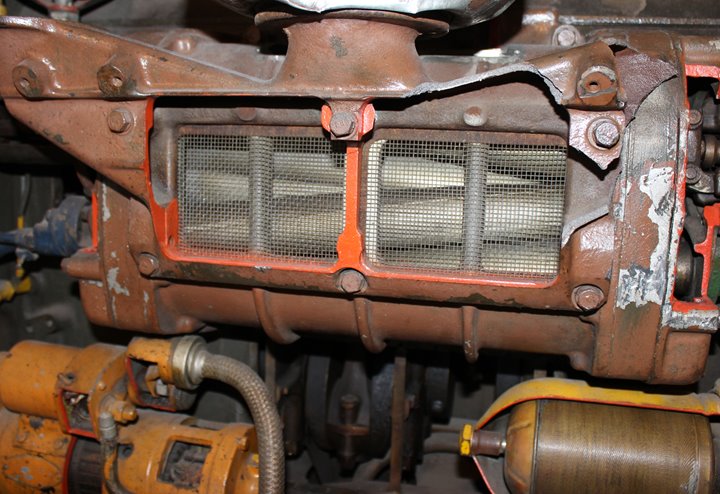
This cut-away is unique in that it shows the
Plant 7 cast internal rotors inside the assembled super charger blower
assembled by Delco-Remy. Author's photo.
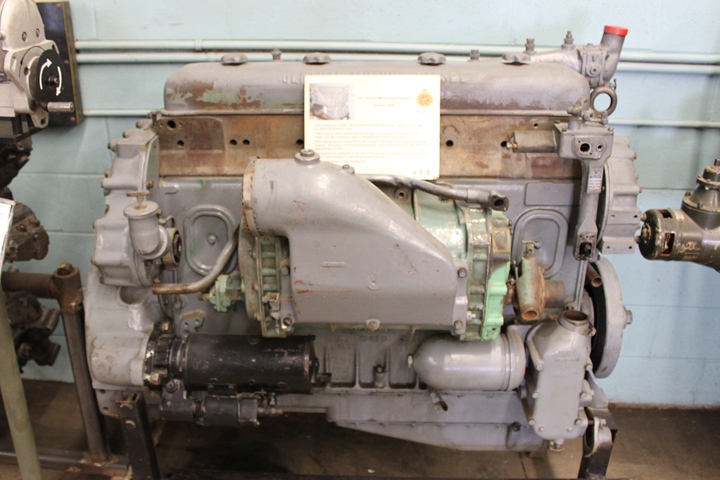
This Detroit Diesel 6-71 tank engine is on
display at the Ontario Regiment Museum in Oshawa, Ontario. The
Delco-Remy starter and solenoid can be seen in this photo.
Author's photo added 12-4-2020.
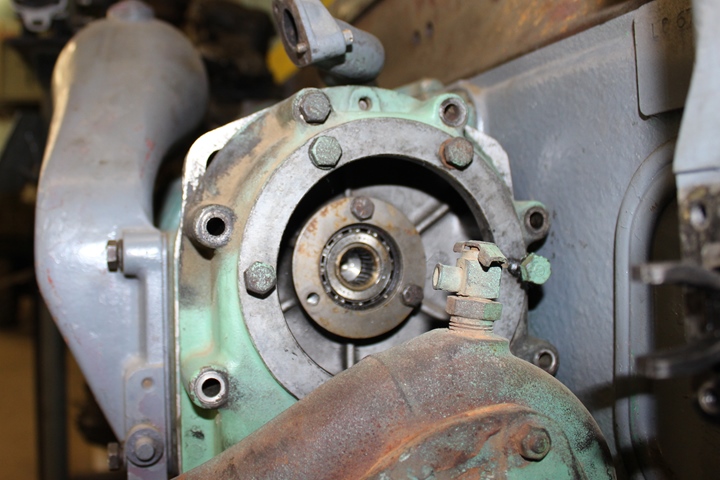
Of more interest is this view into the
output end of the blower. This shows some of the machined parts
that were part of the unit. Author's photo added 12-4-2020.
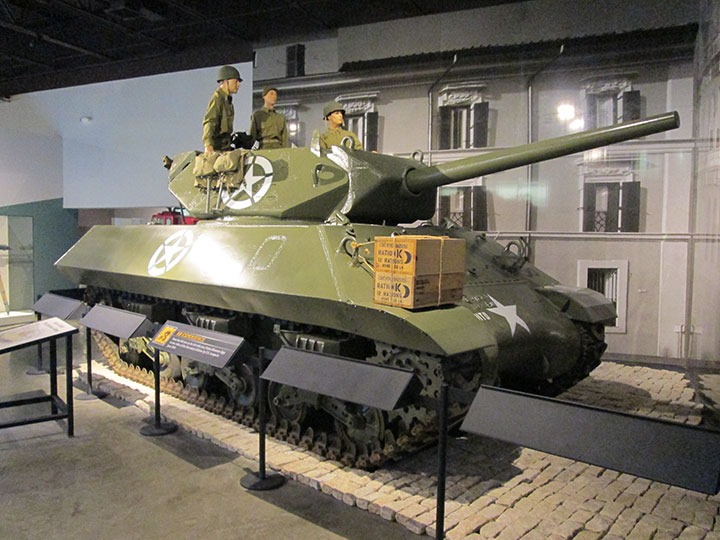
The Fisher Body Tank Arsenal in Grand Blanc,
MI built 5,368 M10
Wolverine tank destroyers with the Detroit Diesel 6046 engine. The
M10 required 10,736 blowers.
Author's photo from the Patton Museum.
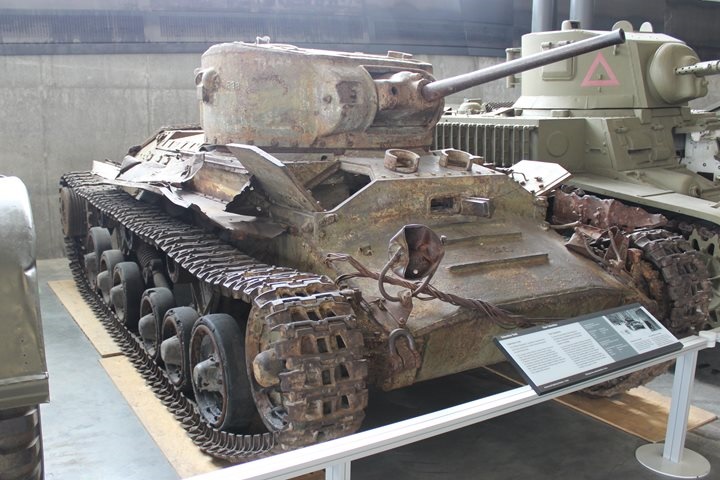
This is one of 3,981 Valentine tanks built in both Canada and Great
Britain that used a Detroit Diesel 6-71 engine. Author's
Photo from the Canadian War Museum.
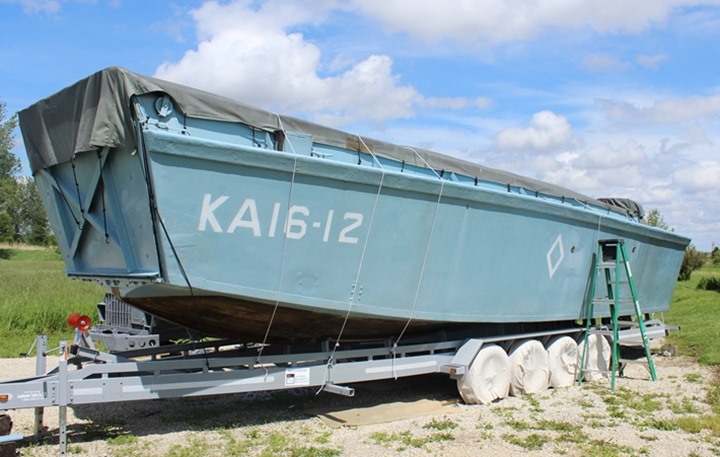
The Landing Craft, Vehicle, Personnel (LVCP)
Author's photo.
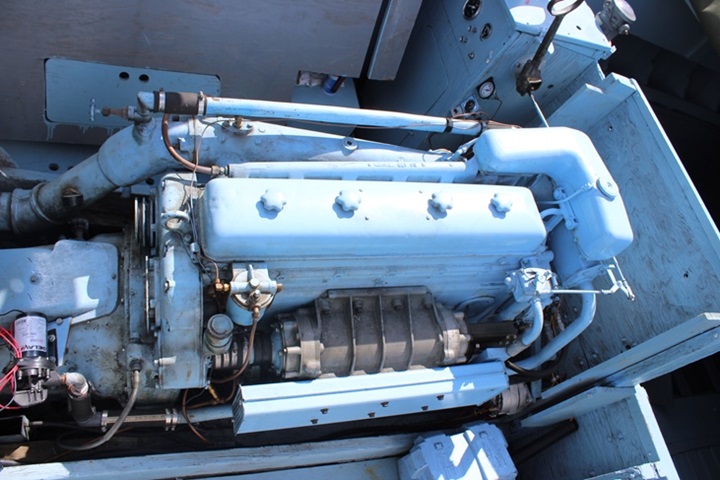
The supercharger blower on the 6-71
engine can be seen in the photo. Author's photo.
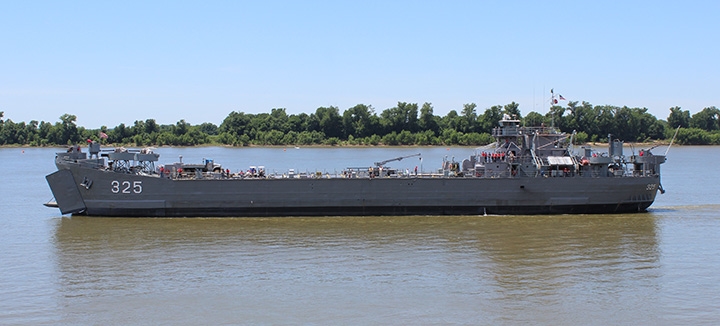
Delco-Remy built-blowers were used on the
Detroit Diesel engines that supplied ship's power to many of the LSTs
built during the war. Author's photo.
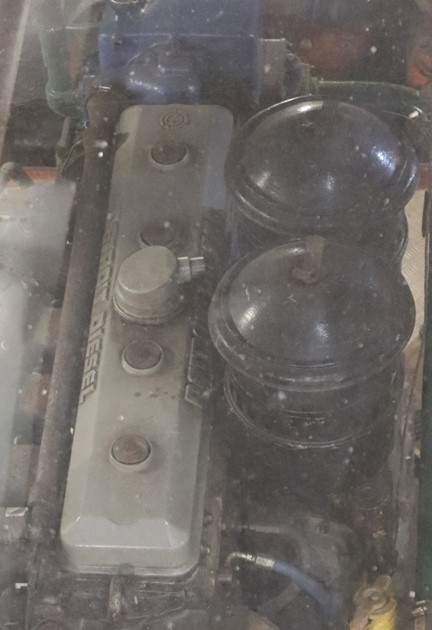
Here is one of the three 6-71 ship's power
engines on LST-325 in Evansville, IN. Part of the tank level deck
has been cut open so visitors can look down to see the engines inside
the auxiliary engine room. The hole is covered with Plexiglas for
safety reasons, but also impairs clear photos the engines. The
orientation is looking towards the front of the ship. The blower
is underneath the two air cleaners. Author's photo.
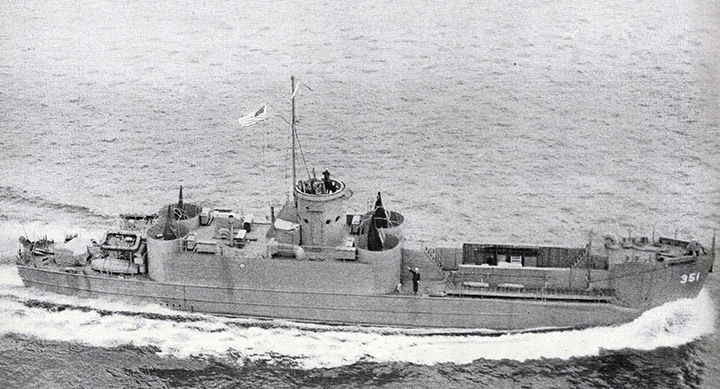
A US Navy LCI(L) (Landing Ship, Infantry
(Large)) underway during WWII with Delco-Remy equipped supercharger
blowers.
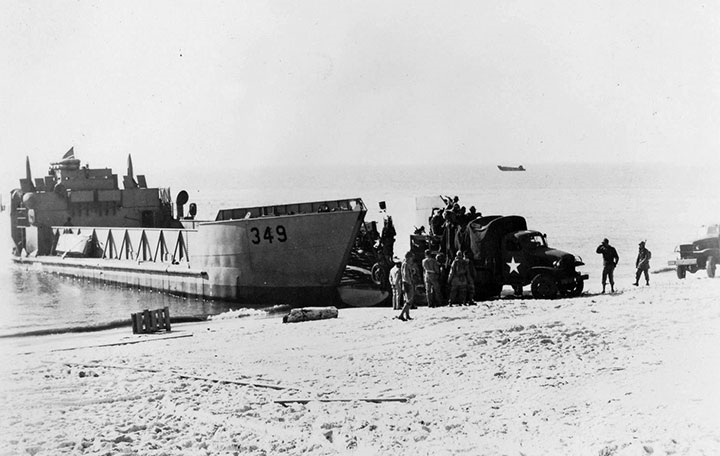
The Landing Craft, Tank was powered by three
Detroit Diesel engines equipped with Delco-Remy blowers.
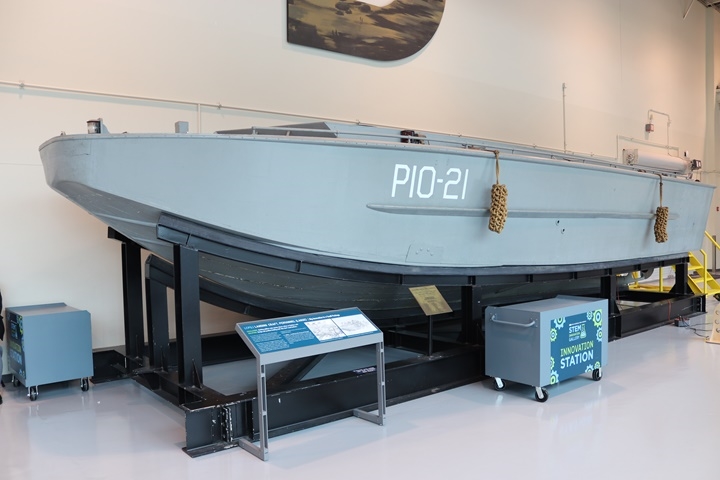
This Landing Craft, Personnel (Large)
(LCP(L)) built by Higgins Industries of New Orleans, LA is on display at the
National World War Two Museum, also in New Orleans. Many of the LCP(L)s were powered by 6-71 engines with their Delco-Remy supercharger
blowers. Author's photo.
Related information can be found on the
Antioch Foundry
Page.
|

























